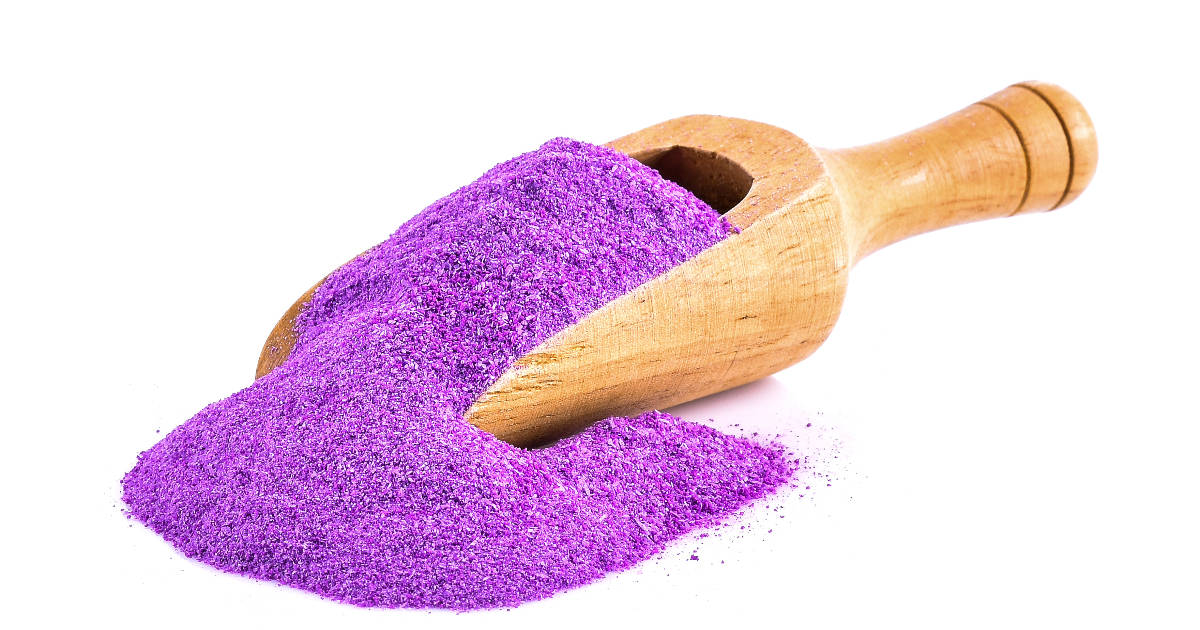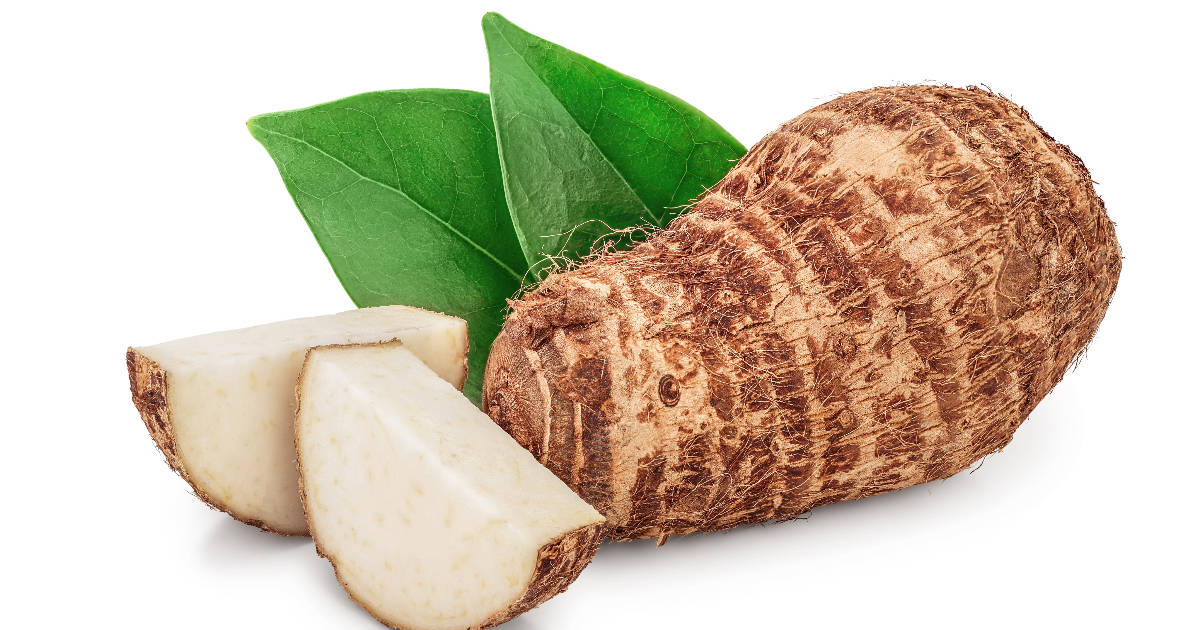Have you ever tried taro bubble tea and wondered what makes it taste so unique? The secret ingredient is likely taro powder. Taro powder is made from the starchy taro root and adds a sweet, nutty flavor and purple hue to foods and drinks.

If you enjoy Asian cuisine or bubble tea, learning more about taro powder can help you better appreciate it.
What Is Taro Powder?

Taro powder is a fine, starchy powder made from the taro root vegetable. To make it, taro roots are peeled, boiled, and mashed into a paste. The paste is then dried and ground into a light purple powder.
Taro is believed to have originated in Southeast Asia but is now used in cuisines worldwide. The edible tuber has been a staple food for centuries thanks to its versatility as an ingredient.
The resulting taro powder has a sweet, nutty taste and creamy texture. It can add flavor, nutrition, and color to both sweet and savory dishes.
Taro Powder Nutritional Benefits
One of the biggest benefits of taro powder is its rich nutritional profile. The taro root is an excellent source of:
- Carbohydrates
- Dietary fiber
- Vitamin C
- Vitamin E
- B vitamins
- Minerals like copper, manganese, and iron
It's also low in fat and calories. Using taro powder allows you to take advantage of the nutrients found in the whole taro root in an easy-to-use form.
However, some nutrients are lost when the root is processed into powder. Making your own taro powder from fresh roots maximizes nutrition.
Does Taro Powder Have Caffeine?
Taro is a root vegetable and does not naturally contain any caffeine. Taro powder made directly from taro roots is caffeine-free.
However, taro powder is sometimes used as an ingredient in foods and drinks that contain caffeine, like coffee or tea. So your taro-flavored beverage may have caffeine from other ingredients even if the taro itself does not.
How To Use Taro Powder
One of the best aspects of taro powder is its versatility. Here are some of the many ways to enjoy it:
Baking and Cooking
Add taro powder to bread, cakes, cookies, pancakes, and more for flavor, color, and nutrition. It works well in recipes that call for flour and can even replace some of the flour. Taro powder also thickens sauces, stews, and soups.
Beverages
Stir taro powder into milk, non-dairy kinds of milk, water, and juice to make flavored drinks. It's commonly used in the classic Taiwanese boba tea drink, taro milk tea. The powder offers that signature taro taste without needing to prepare the whole root vegetable.
Smoothies and Shakes
Blend taro powder into smoothies, milkshakes, and protein shakes. It pairs nicely with fruit flavors like banana, berries, and mango. For a nutrition boost, use milk or non-dairy milk like almond or coconut milk.
Desserts
Add taro powder to ice cream, yogurt, pudding, mousse, and rice pudding recipes. It can be used to make taro-flavored desserts or to lend its color and nutrition to treats.
Snacks
Make taro powder the star ingredient in homemade energy bites, protein bars, granola bars, and muffins for nutritious snacks.
As you can see, taro powder is endlessly adaptable to both sweet and savory dishes. Experiment with adding it to your favorite foods or try one of the suggested uses above.
How Is Taro Powder Made?
Taro powder can be made using two main methods:
Traditional Method
The traditional technique involves:
- Peeling and boiling fresh taro roots
- Mashing boiled taro roots into a smooth paste
- Spreading paste out to dry in the sun
- Grinding the dried taro paste into a fine powder
Sun-drying helps preserve the flavor and nutrition of the taro. The paste is then ground with a mortar and pestle.
Modern Method
Today, most commercial taro powder producers use an industrial process like:
- Peeling and boiling fresh taro roots
- Mashing boiled taro roots into a paste
- Drying taro paste at low temperatures instead of the sun
- Milling the dried taro paste into super fine powder
Low-heat drying helps maintain more nutrients. The powder is then produced using high-powered mills and sifters.
Where To Buy Taro Powder
Thanks to taro powder's popularity in Asian cooking and baking, it's available at many mainstream grocery stores and online:
- Local Asian supermarkets are a top source of taro powder. Look for Japanese, Chinese, Korean, or Southeast Asian specialty markets.
- Major grocery store chains may carry it in the Asian foods section or baking aisle. Check health food stores too.
- Purchase taro powder from online retailers like Amazon, Walmart, and Asian food websites. Opt for reputable brands with clear ingredient labels.
When browsing taro powder options, watch for possible additives like sugar, salt, starch, or artificial coloring. Choose pure taro powder for the truest taro taste and nutrition.
What Does Taro Powder Taste Like?
The flavor of taro powder is nutty and slightly sweet, with hints of vanilla and chestnut. When raw, taro roots taste more like potatoes or water chestnuts.
When boiled and mashed into powder, the natural sugars concentrate, developing taro's sweetness. There are also delicate floral notes.
The taste and texture of taro has been compared to:
- Sweet potato
- Cooked chestnut
- Potato pancakes
- Water chestnut
It's a versatile flavor that enhances both sweet and savory foods. Taro powder's taste is subtle enough to blend with other ingredients without overpowering them.
Taro Powder in Bubble Tea Recipes
One of the most popular uses for taro powder is making homemade taro bubble tea or boba. To make taro milk tea with powder at home just follow these steps:
Ingredients:
- Taro powder
- Tapioca pearls
- Strong brewed black tea or milk
- Sweetener like sugar
- Ice (optional)
Directions:
- Cook tapioca pearls according to package instructions and set aside.
- In a bowl, whisk taro powder and a small amount of hot water until smooth.
- Add milk or cold brewed tea, sweetener, and extra water if needed.
- Optional: For thicker tea, blend everything together.
- Add tapioca pearls to a glass and pour taro milk tea over top.
- Add ice if enjoying the cold. Enjoy with a bubble tea straw!
Experiment with different milks and sweeteners to make your taro milk tea perfect. You can also use taro powder to make taro smoothies.
Conclusion
Taro powder brings the flavor and nutrition of the taro root to your favorite recipes and drinks. Use it to add a tasty twist to baked goods, beverages, desserts, and more. Look for taro powder at an Asian grocer or online retailer to enjoy its benefits.
With its naturally sweet, nutty taste and vivid purple color, taro powder is sure to infuse your cooking and snacking with Asian essence. The versatile powder eliminates the need to cook whole taro while letting you reap its nutritional rewards.

